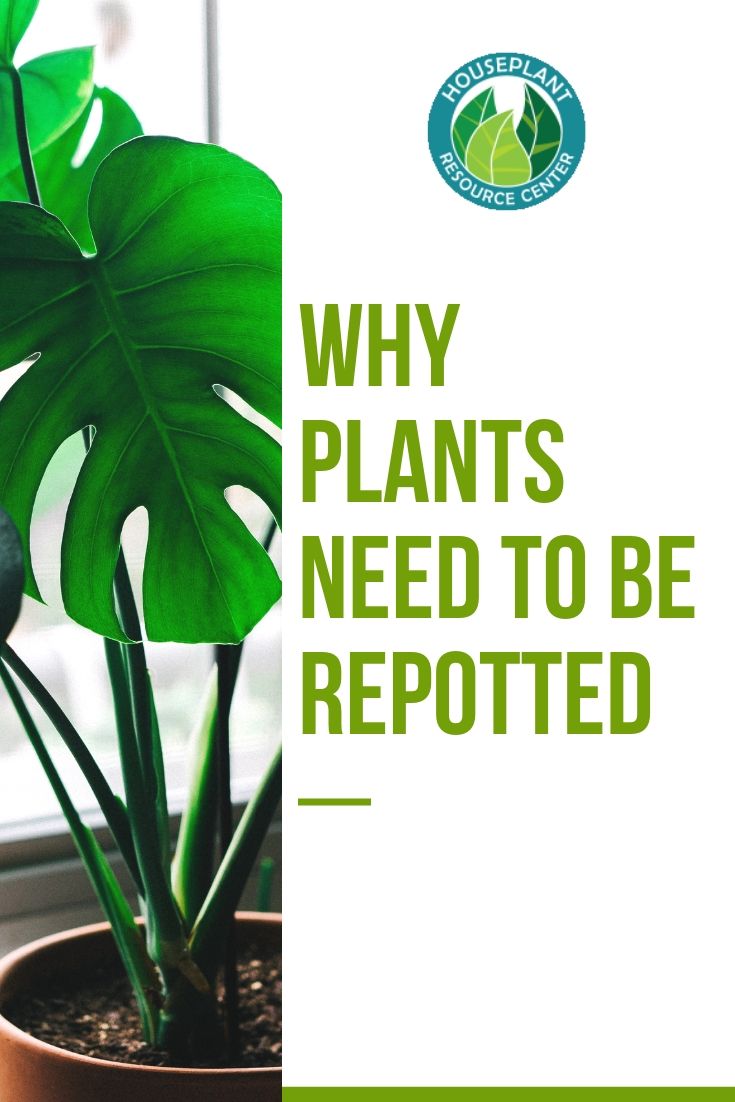Why Plants Need to Be Repotted
It’s easy to get a new houseplant, stick it in a pot, and more or less forget about it. Sure, you know that plants need water and light, but their needs don’t end there. Plants can’t sit in the same soil forever!
If you want your plants to stay healthy and even grow, they’ll need new soil regularly and maybe a bigger pot at some point.
This means repotting.
So why do plants need to be repotted anyway?
Table of Contents
Why Plants Need Repotting
It’s as much about the soil as it is the pot. Maybe even more!
Soil Decomposition
Over time, soil decomposes, and the various components break down and even rot. No plant likes to sit in rotting soil! Repot regularly to protect your plant from diseases caused by mold, fungi, and bacteria.
Soil Compression
Soil can also compress over time, especially soils with a high percentage of peat and bark. This means that your plant will have a harder time growing new roots and worse, the soil won’t absorb water as well or drain properly. This increases the risk of both dehydration and root rot!
Your plants also need room to grow. If you don’t want it to get any bigger, however, you can trim down the plant and the roots and repot it in the old pot with fresh soil. Just make sure to thoroughly clean the pot first so no old fungi, bacteria, or insect larvae stick around.
Nutrient Depletion
Potting mix is usually fortified with nutrients to support plant growth, but any plant will suck that soil dry within a few months to a year. You can and should fertilize your plant, of course, but you still need to replace the soil every so often to give the plant a base of nutrients to draw from.
Space
When plants outgrow their pots, they can become pot bound and stop growing completely. The roots may also have trouble absorbing water or nutrients, so you might see yellowing, brown spots, or dropping leaves.
Every once in a while, move your plant to a bigger pot or remove it from its pot to replace the soil and prune the roots and stems to keep it the same size.
Signs your plants need to be repotted
You should be fine with sticking to a six to twelve-month schedule, but if you see any of these signs, an emergency repotting might be in order!
- The soil doesn’t absorb water as well. (It either sits on top or runs right out the bottom without absorbing.)
- The soil doesn’t drain.
- The soil looks like it’s packed in really tightly.
- You see roots popping out the drainage hole or on the surface of the soil.
- The roots start pushing the plant upward.
- The plant stops growing or grows more slowly than usual.
- If the plant just looks too big for its pot, it probably is. If it’s top heavy and falls over easily, it’s outgrown its pot!
I hope that clears up some of the mysteries around repotting! Stay tuned for our next article where we’ll teach you how to actually repot your plants. See you there!




